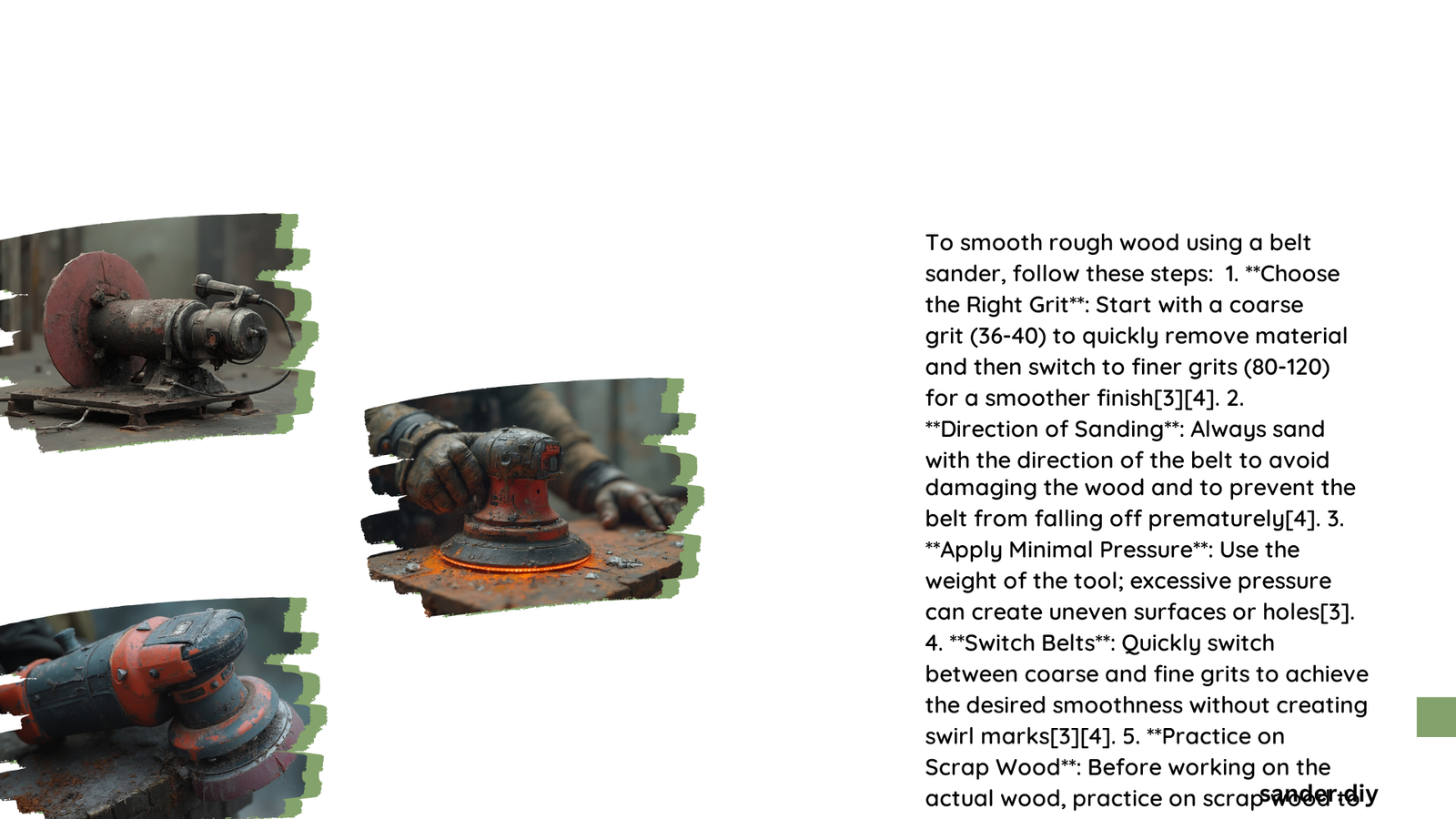Belt sanders are powerful woodworking tools designed to quickly smooth and level rough wooden surfaces. When used correctly, they can transform uneven, raw lumber into a smooth, refined material ready for finishing. Understanding the nuanced techniques of belt sander rough wood requires knowledge of grit selection, tool control, and strategic sanding approaches that minimize damage while maximizing material removal efficiency.
What Are the Best Grit Selections for Rough Wood?
Belt sanders require strategic grit selection based on the wood’s initial condition and desired outcome. Here’s a comprehensive breakdown:
Coarse Grit Range (40-60)
- Ideal for extremely rough surfaces
- Removes significant material quickly
- Best for initial wood leveling
- Potential for deep scratches
Medium Grit Range (80-100)
- Most versatile for rough wood
- Balanced material removal
- Smoother surface preparation
- Recommended for initial sanding stages
| Grit Range | Material Removal | Surface Quality | Recommended Use |
|---|---|---|---|
| 40-60 | High | Rough | Initial Shaping |
| 80-100 | Moderate | Smoother | Primary Sanding |
| 120+ | Low | Fine | Finishing Preparation |
How to Control Belt Sander Effectively?

Controlling a belt sander requires precision and technique:
- Maintain Consistent Pressure
- Let tool’s weight do primary work
- Avoid pushing down forcefully
-
Move smoothly across wood surface
-
Directional Sanding
- Start at slight angle to wood grain
- Transition to parallel grain movement
- Prevent wood fiber tearing
What Maintenance Practices Ensure Optimal Performance?
Belt Replacement Strategies
- Inspect belt regularly for wear
- Replace when visible deterioration occurs
- Clean belt using specialized cleaning sticks
- Ensure proper belt tracking
Common Troubleshooting
- Address overheating by taking breaks
- Prevent gouging through careful technique
- Monitor sander temperature during extended use
What Safety Considerations Matter?
Personal Protection
- Wear safety glasses
- Use dust mask
- Implement hearing protection
- Work in well-ventilated area
Equipment Safety
- Check electrical connections
- Inspect cord for damage
- Maintain clean working environment
- Store sander in dry location
Pro Tips for Advanced Woodworkers
- Use variable speed settings
- Match sander to specific wood type
- Practice on scrap wood first
- Understand wood grain characteristics
- Invest in high-quality sanding belts
Recommended Belt Sander Techniques
- Start with coarsest appropriate grit
- Progress systematically through finer grits
- Move sander consistently
- Overlap sanding passes
- Check surface frequently
Final Wood Preparation
After belt sanding:
– Wipe surface with tack cloth
– Inspect for evenness
– Use hand sanding for final refinement
– Apply appropriate wood finish
References:
– Family Handyman Belt Sander Guide
– Wood Magazine Sanding Techniques
– Popular Woodworking Tools
